
The vintage in 2010 was hot, dry and stressful for the vines. If you were planning on making big, rich Cab-Merlots and other Bordeaux blends and voluptuous white wines this was the vintage for you.
If, on the other hand, you were looking for elegance and finesse from your Pinot Noirs and Chardonnays, well that was a different story entirely.
Les Clos Jordanne winemaker Sébastien Jacquey looked at 2010 as the ultimate challenge. The niche producer of some of Niagara’s top Pinots and Chardonnays (and ONLY Pinot and Chardonnay) had his work cut out for himself, on his first full vintage from vine to bottle after taking over from Thomas Bachelder.
“Yeah, it was kind of challenging,” says Jacquey. The trick was finding the balance between high Brix (sugar content) and low acidity. Jacquey, and the Les Clos style, is to preserve freshness in both the Pinots and Chards and that means higher acidity.
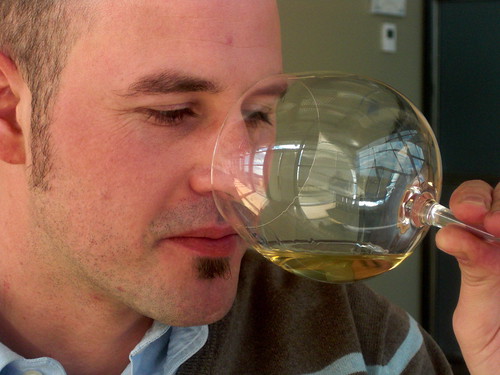
Jacquey, above, prefers to harvest Pinot at around 22 to 22.5 Brix but because the 2010 vintage was so hot, the grapes were picked between 24 and 25 Brix even with the earlier picking.
That meant an extended cold soak of up to four days to “extract colour and tannins,” he explained.
The oak was also reduced to 30% new barrels from the usual 40%.
“I didn’t want the vintage to be defined by the oak. I tried to preserve freshness.”
On the Chardonnay side, there were similar challenges. Oak was nearly cut in half from 30% new barrels to 15% and older oak barrels were used for aging.
“I want tannins,” says Jacquey, “but not the wood flavours.”
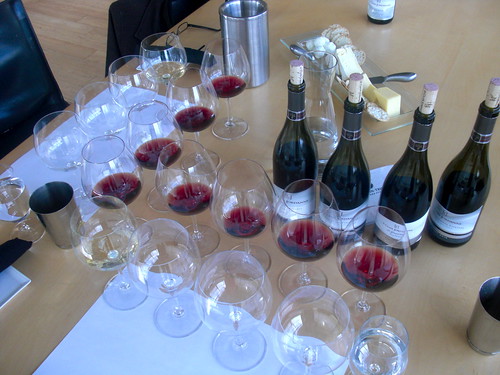 He tried to minimize those caramel-butterscotch flavours in his Chards and instead aimed for a leaner style with more citrus flavours and vibrancy on the palate. Which is a lot easier said than done in a vintage such as 2010.
He tried to minimize those caramel-butterscotch flavours in his Chards and instead aimed for a leaner style with more citrus flavours and vibrancy on the palate. Which is a lot easier said than done in a vintage such as 2010.
Jacquey says you have to accept what Niagara gives you vintage to vintage.
“We have to face it, Niagara is going to be different every year. I’m happy with these wines because they reflect the vintage. That’s what I got, that’s what the vintage gave me.”
Beginning with the 2010 vintage, Les Clos has trimmed down the portfolio of single-vintage wines. Both the Talon Ridge and La Petite Vineyards have been cut from the program with the fruit from those vineyards going into the Village Reserve wines, which is a fast-growing label at Vintages.
That leaves these wines in the portfolio:

• Le Clos Jordanne (the estate’s principal vineyard) is characterized by its tranquility and unique setting on a natural plateau near the slope of the escarpment. It enjoys light limestone soils created by the ancient ice shield, with rich sediments. Its wines are considered to be some of the best within the Le Clos Jordanne Estate, falling into the ultra-premium category. It is located at 2738 King Street, Jordan Station, at the T-junction of Jordan Road and Highway 81.

• Claystone Terrace Vineyard is characterized by its heavier, dark clay soils, which retain more moisture. Its wines have been described as robust and masculine in character, with rich fruit tightly wound around a core of minerality, acid and tannin. It is located at 17th Street and King Street, Jordan.
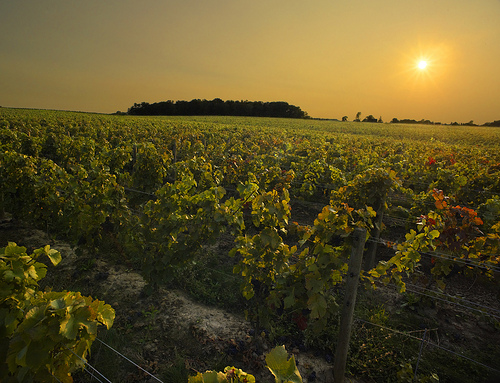
• Le Grand Clos, the winery’s “Grand Cru” of Niagara, is created exclusively from the Le Clos Jordanne Vineyard’s best parcels in only the best years. It is considered the finest expression of the Niagara terroir, combining elegance, character, complexity and purity at its peak.
Here’s what I enjoyed with Jacquey at private tasting set up at Jackson-Triggs Winery (where you can purchase all these wines) recently:
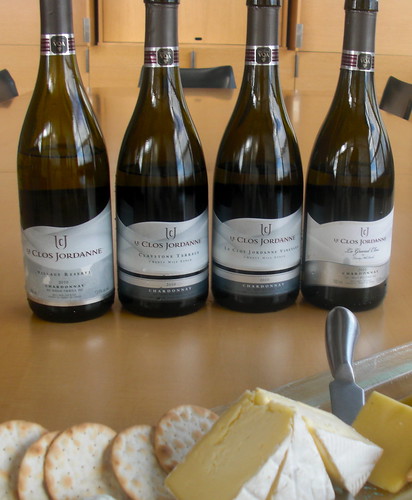
Le Clos Jordanne Village Reserve Chardonnay 2010 ($30, Vintages, 90 points) — Jacquey worked hard on this warm vintage to preserve the freshness that he desires in both his Chardonnays and Pinots. That meant earlier picking of the grapes (for acidity) and less oak treatment in the finished wine. The wine on the nose is appealing for its range of apple and citrus fruits that are integrated with soft vanilla and spice. It’s a broad, generous, almost voluptuous style of Chard with ripe, forward fruits that caress the palate without being fat or weighty. It is packed with extracted fruit through the finish but balanced out by fresh acidity and a deft touch with the oak and wood tannins.
Le Clos Jordanne Claystone Terrace Vineyard Chardonnay 2010 ($40, 91) — I had to keep coming back to this wine as it opened up to reveal its flinty minerality, brioche and fresh apple-peach nose with soft vanilla spice and citrus in the background. It’s a complex and surprisingly finessed Chard on the palate that displays ripe fruit, balancing acidity, nice structure and length through the finish. It’s a generous wine that relies on the fruit and minerality of the vineyard rather than the oak barrels it’s aged in. Cellar for five years if you prefer those lovely tertiary flavours or drink now while it’s fresh.
 Le Clos Jordanne Le Clos Jordanne Vineyard Chardonnay 2010 ($40, 91 points) — A generous, expressive nose of stone fruit, citrus, apple tart and creamy spices are joined by minerals and integrated oak notes. This is showing well out of the bottle and will reach its peak long before the tight 2009 vintage. It’s big in the mouth without being fat with a warm, voluptuous texture, excellent spice integration and juicy peach, citrus, pineapple fruits and a complex seam of minerality neatly stitched through the core.
Le Clos Jordanne Le Clos Jordanne Vineyard Chardonnay 2010 ($40, 91 points) — A generous, expressive nose of stone fruit, citrus, apple tart and creamy spices are joined by minerals and integrated oak notes. This is showing well out of the bottle and will reach its peak long before the tight 2009 vintage. It’s big in the mouth without being fat with a warm, voluptuous texture, excellent spice integration and juicy peach, citrus, pineapple fruits and a complex seam of minerality neatly stitched through the core.
Le Clos Jordanne Le Grand Clos 2010 Chardonnay ($60, 92 points) — Another generous offering, as is expected from the vintage. Jacquey has captured beautifully what the season delivered. The nose jumps with poached pear, lemon curd, soft vanilla oak spice, brioche, honey and chalky minerality. There is a creaminess on the palate that is more evident in this top bottling of Le Clos, but there is freshness and a citrus lemon-lime note that balances the more voluptuous pear, stone fruit and butter-cream flavours that fill the mouth. It has more weight than the other Chards in the family and has good length through the finish. There is a lot of fruit here, but also uplifting acidity and verve that will carry this wine a long time in the cellar.

Le Clos Jordanne Village Reserve Pinot Noir 2010 ($30, Vintages, 89 points) — The Village Reserve Pinot from 2010 is more about the generosity of fruit than the fine intricacies and nuances this grape can deliver. It has a big, obvious nose of bright cherry-raspberry fruit with a subtle savoury-spicy note. It is expressive and bold on the palate with flavours of warm raspberry jam, earth, savoury spice with a smooth texture, drying tannins and moderate acidity. Le Clos is usually built to improve in the cellar for a few years but this Village Reserve is drinking very nice right now.
Le Clos Jordanne Claystone Terrace Pinot Noir 2010 ($40, Vintages, 89 points) — The Claystone shows more fruit on the nose than previous vintages and less of those earthy-loamy notes that gives this wine its reputation as the beefiest of the Le Clos Pinots. The 2010 shows ripe black cherry, blueberry, brown spice, vanilla oak, chalky minerality and just a hint of red licorice and foraged mushrooms. It is lovely on the palate with excellent oak integration that melds well with the abundant fruit, underbrush, firm tannins and swirling spices. It’s smooth through the long finish and will benefit from some aging in the cellar.
Le Clos Jordanne Le Clos Jordanne Vineyard Pinot Noir 2010 ($40, 91) — This possesses a beautiful nose of raspberry-cherry puree, dried flowers, warm baking spices and forest floor. There is a more restrained feel on the palate with a silky texture, fine grained tannins and ripe red fruits that turn to cassis and crushed red currants as it opens up. All in all, a finessed and more delicate Pinot from a warm vintage that is impressive through the long finish.
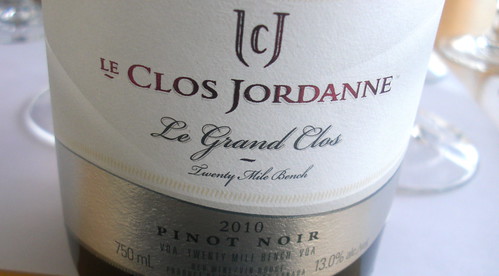
Le Clos Jordanne Le Grand Clos Pinot Noir 2010 ($70, 94) — This is simply gorgeous and even tops the Pinots from the excellent 2009 vintage, in my opinion. It has it everything I love in great, cerebral Pinot Noirs. The nose shows savoury cherry, cranberry, currants, roasted garden herbs, sweet oak spices, vanilla toast, plums, raspberry and cassis all in perfect harmony. It is a wine with profound depth of flavour on the palate, running the gamut from bright red fruits to earthy, meaty and savoury dark fruits, violets, wet earth, chalky minerality, oak-inspired spices that are all intricately woven together on a seamless spine of silky tannins, acidity with both the power and grace that will carry this long into the future. It is one of the finest Le Clos made to date. And it has the stuffing to get even better with time.


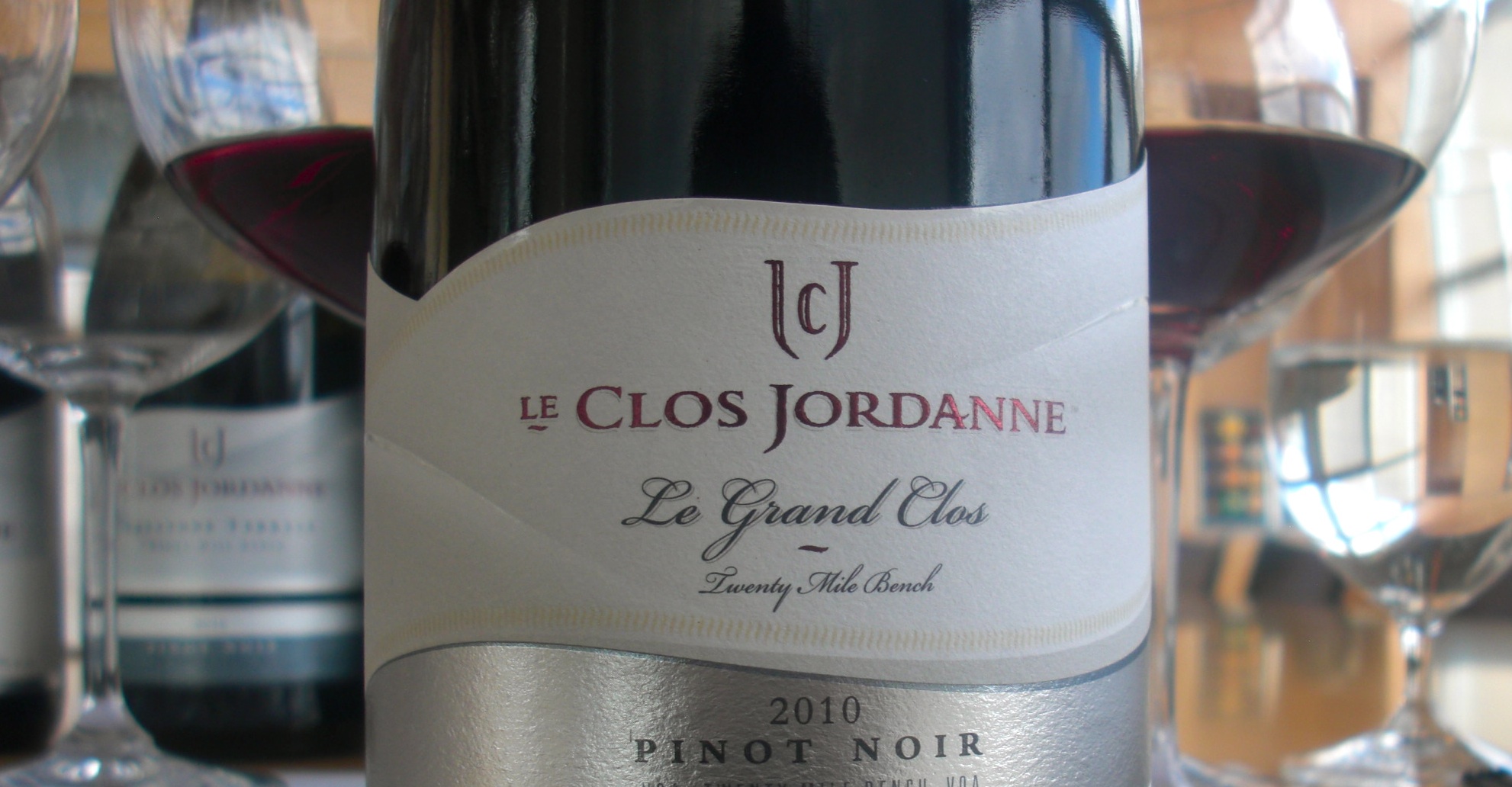



Comment here